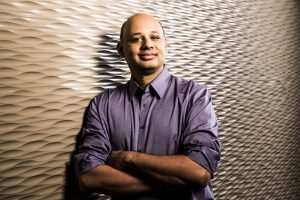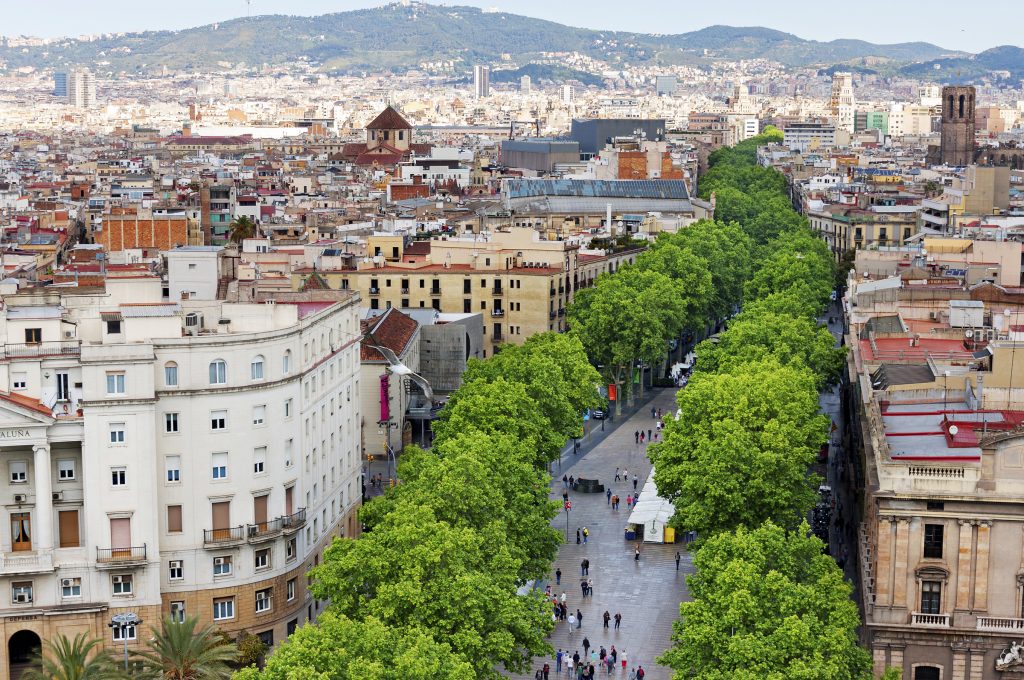Anand Eswaran: Life improves when societies are connected
Half of the world’s population is now living in urban spaces, and more growth is on the way. With this growth comes more pollution, more traffic congestion and more people who need access to food. While technology can’t solve every problem, it is already having a meaningful impact on these challenges.
At Microsoft, we believe that advances in the new digital era will solve many of the problems created in the agricultural and industrial eras. It will help make society safer, and more sustainable, efficient and inclusive. To accomplish this, we need to address the infrastructure gap that is standing in the way.
Digital transformation is happening faster than expected, but in pockets. A Harvard Business Review Analytic Services survey recently found that 84 percent of leaders believe digital disruption of their organization is imminent, and 50 percent believe their business model will be obsolete by 2020. Yet most of those same leaders have no specific and concrete plan in place to transform their organization.

Over the next few weeks, Microsoft and our partners will share our vision for connected societies at three events around the world – the Smart Cities Expo in Barcelona (Nov. 14-16), AutoMobility in Los Angeles (Nov. 27), and a Microsoft-hosted event for business leaders in New York in early December. We will share our ideas about building the digital infrastructure needed to create connected societies and improve quality of life around the world.
How will we build connected societies?
Digital transformations begin with digital dreams. Finding the right problem to solve is often much harder than solving a hard problem. You don’t start with a conversation about technology. You begin by envisioning the “art of the possible.” Understand where you are today, and where you want to get to – this is the same for businesses and governments.
With HM Revenue and Customs in the UK, we began with an organization wanting to become the world’s most digitally advanced tax authority to improve productivity and create a more flexible work environment. With SkyAlert, we worked with only one of four companies in the world that is saving lives by alerting people to earthquakes before they strike. The company’s dream was to create an early-warning system and they needed a reliable IoT platform that could send millions of notifications in fewer than two seconds.
Evolution proceeds through micro-revolutions. Once you have the dream, you need to get to the details quickly. Unlike previous technology shifts, progress in the digital era is measured in months, not decades – and it is rarely about one major project, but rather about smaller, more rapid micro-revolutions. Project deadlines must contract, scopes must be focused, and progress must proceed through a series of messy iterations that evolve and morph as the organization adapts to the environment.
We helped turn Rolls Royce, an auto and aerospace manufacturer, into a leading data analytics company, potentially improving air travel for billions of people around the world, making it safer and more efficient. We also helped Evoqua Water Technologies move from a 100-year-old water equipment manufacturer into a water-analysis firm helping companies be more efficient with their water use and protecting an important natural resource.
Microsoft is closing the digital divide by creating new digital infrastructure that societies need to thrive. By 2022, more than 35 million non-commercial vehicles will be able to communicate with other vehicles on the road. Despite that, fewer than 150,000 are expected to actually have that capability by the end of this year. This is why Microsoft is creating location-based services to light up the infrastructure that autonomous vehicles need to operate, potentially reducing collisions and traffic congestion.
Microsoft is not only crafting the fabric of connected societies through physical and digital infrastructure like IoT sensors, sophisticated data analytics and construct data centers, but we’re also partnering with the world’s most digitally advanced nations and sharing our knowledge with customers like Auckland Transport in their effort to build a smart transportation grid for the world’s most livable city.
Understanding our digital future cannot be built in silos – it must be built with great partnerships. To tackle the enormous challenges of connected societies, we must develop coalitions of interested organizations from across the entire ecosystem of governments, companies, universities and non-profit institutions.
Microsoft is building digital infrastructure with hundreds of thousands of partners from each of these key areas on a cloud that meets a broad set of international standards and compliance requirements from Europe to China to North America and beyond. We’re working with a coalition of digitally advanced nations called the “D5” and the Fletcher School at Tufts University to construct an international benchmark of digital maturity for nations. And through Vision Zero, Microsoft is working with Open Data Nation (ODN) to reduce traffic fatalities and injuries.
The digital era will solve many of the problems created by the agricultural and industrial eras. The combination of advancements in the cloud and AI, coupled with new technology breakthroughs around quantum computing will allow us to address the world’s hardest challenges, as we work to make societies safer, and more sustainable, efficient and inclusive.
We will continue to work on private-public partnerships as governments look to leave behind old processes, disparate system, and paper-based methods to solve the “Gordian knots” of pollution, traffic congestion, and limited access to nutritious food and clean water for the growing world population.








